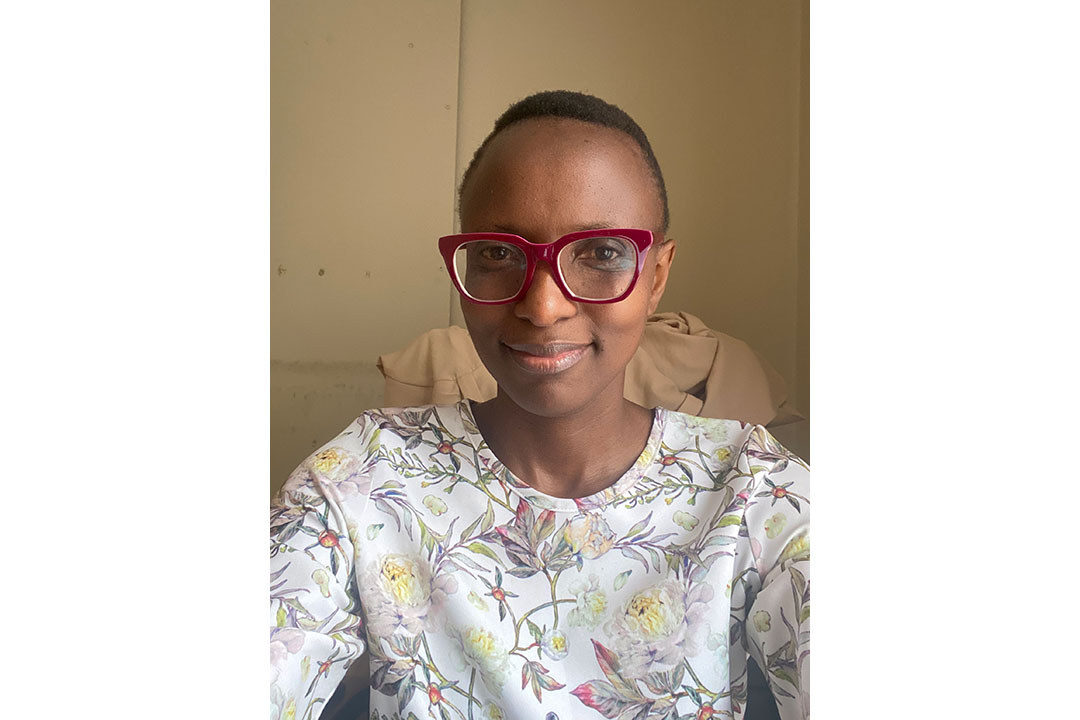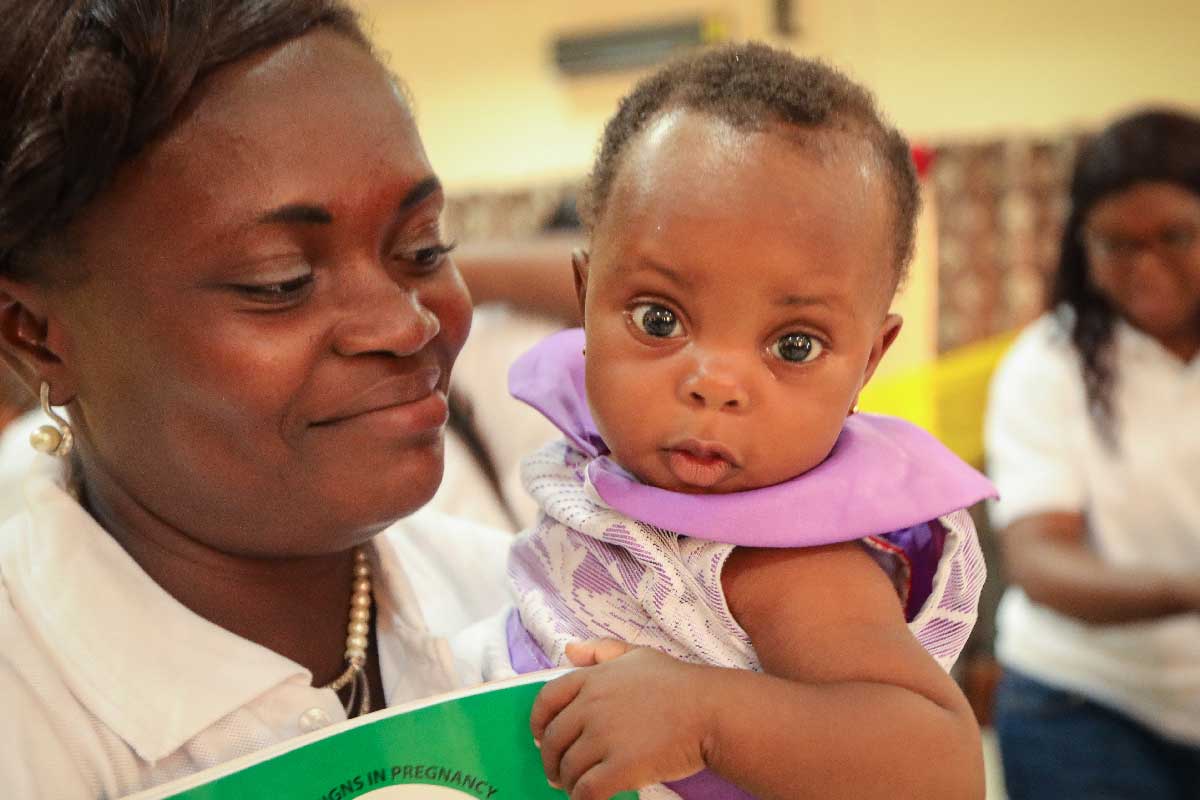“We lose so many women every day”: cervical cancer in low-resource settings
In rural areas of South Africa, women with cervical cancer are often diagnosed late, and hospitals don’t necessarily have the resources to care for them, says Dr Nwabisa Giyose.
- 6 March 2023
- 8 min read
- by Linda Geddes

South Africa has lower rates of cervical cancer than some of its neighbours, but there are regional differences. What’s it like in the Eastern Cape province, where you work?
The South African health system is well-funded by the state compared to neighbouring countries, where a lot of people depend on out-of-pocket expenditure to access health care, but there are definitely stark differences within the country – especially in the Eastern Cape, KwaZulu-Natal, and Limpopo provinces, which are very rural.
HPV causes more than 98% cases of cervical cancer, and HIV is an important co-factor in cervical cancer because it increases the risk of persistent infection with HPV including the cancer-causing types.

Women in rural areas often have to travel very far to access the nearest primary healthcare facility, which costs money, and these are poverty-stricken areas where people may be facing other challenges, such as buying food, taking care of children and so on.
There are also socio-cultural challenges: a lot of people seek care from traditional healers, who may perceive their symptoms to have a traditional explanation, rather than a medical explanation. We also see a high prevalence of HIV and human papillomavirus (HPV) infections in the rural areas, which are sexually-transmitted. [HPV causes more than 98% cases of cervical cancer, and HIV is an important co-factor in cervical cancer because it increases the risk of persistent infection with HPV including the cancer-causing types.]
Again, some of this has to do with traditions, where it is basically acceptable or celebrated that men have multiple sexual partners. On the flipside, women have also become more sexually liberated, but this doesn’t necessarily empower them to have the voice to stay away from these men who sleep around; instead, it has sort of liberated them to do the same.
Use of barrier methods is not a norm in many relationships, especially for married people. When women suggest condoms to their partners, they are accused of being unfaithful, and their effort is discouraged.
Finally, there’s a lack of education and awareness about cervical cancer screening, which tends to go hand-in-hand with lower levels of education in rural populations, compared to more urbanised and westernised provinces such as the Western Cape.
How do these factors impact rates of cervical cancer, and when women tend to seek medical attention for their symptoms?
Women tend to present very late with advanced, sometimes incurable disease. They are often in a dire condition – near death, basically. It is sad, because a lot of them don’t know anything about cervical cancer, or about screening for cervical cancer, even though they have been attending healthcare facilities for comorbidities such as HIV, and chronic conditions like diabetes and hypertension.
There is a national cervical cancer screening policy [that has existed] since 2000, that is quite explicit. But unfortunately, it has not resulted in a decline in cervical cancer prevalence because there isn’t any protocol to ensure accountability when it is not followed.
Have you read?
In many cases, these women have been presenting to their clinics with symptoms such as abnormal vaginal bleeding and discharge, but their symptoms were never attended to in a serious manner. The patients were never examined, they were just given medication for their discharge, or to stop bleeding with the assumption that it was a sexually transmitted infection or hormonal imbalances.
Some of them bring their clinical records, and we can see that they have been visiting their clinics for a good two years, but no one had ever examined them. There’s an issue with education both in the general population, and in healthcare facilities.
Tell me more about these women. What sort of symptoms are they experiencing, and how does this impact their lives?
The majority of women are in their 50s and above, but we also see younger women in their 30s and 40s, especially within the HIV-positive population. They are presenting with excessive bleeding, symptomatic anaemia, loss of energy requiring emergency admission and blood transfusion, and they are quite wasted, with low energy, and in severe pain. Some of them haven't eaten for days, are dehydrated, or have kidney failure because of advanced disease that blocks their kidneys.
It is quite tragic, because with the kidney failure patients with advanced cervical cancer, they have no access to renal replacement treatment such as dialysis – once they have advanced cancer, it is an automatic exclusion from dialysis.
Many of them also present with fistulae – an abnormal tunnel between the vagina and rectum or between vagina and bladder – with involuntary leakage of urine or faecal material, and quite a bad odour around them that automatically repels even their loved ones from being close to them. Socially, it’s quite embarrassing and dehumanising for people to be commenting, ‘What is that smell?’ when they know that they didn’t even cause this.
There’s also a culture among women in general, but especially in the rural areas, of being very shy of symptoms that arise from the reproductive system – and too shy to agree to being medically examined, even though they are in such a bad state.
So, there is quite a complex web that tends to entangle them, and it often ends in a very tragic, painful and lonely death.
How well-equipped are hospitals to deal with these women?
They are not very well-equipped. For instance, in my hospital, there is no oncology ward or palliative care team. Sometimes we run out of basic medicines, such as morphine, and at the moment there is no povidone-iodine solution, which we would use to do vaginal douches to get rid of the smell and give women their dignity back. The main hospital has 32 beds for all gynae patients – not just cancer-related ones – and we receive about 20 patients with cancer every Monday morning for the gynae-oncology clinic.
It is a difficult decision not to admit a patient who just needs a place to die, but we have other patients who need to go to the operating theatre who could be saved, and we can’t save them all. We must send them back to their base hospital with clear notes –- but because the base hospitals are run by relatively junior medical officers, many of them feel that they are not well-trained to administer palliative care, and so patients send up being sent home to die there, and to be taken care of by relatives who have no clue what is going on.
Even for those patients where we can operate, we are faced with the challenges of bed shortages, limited theatre time, and sometimes operations are cancelled because of water outages, electricity outages, and malfunctioning equipment. It is not an easy task at all.
The World Health Organization has endorsed a screen-and-treat approach to cervical cancer, where women are tested for HPV, and given preventative treatment on the same day, where necessary. Would that help?
Unfortunately, these point-of-care tests have not come to our area yet. Instead, our women are still dependent on a Pap smear test, which is a send-away test that requires follow-up with the test results a few weeks later. This is another area where we lose an opportunity to prevent cancer, because the cell phone services are not very reliable, people change their phone numbers all the time, and it is quite a vast area, so we lose a lot of women to follow-up. Sometimes cytology samples get lost and patients never receive them, and are not offered repeat screening or decline repeat screening.
When the point-of-care tests arrive, I think it will make a huge difference, but we will need buy-in from the government or from other non-profit or non-governmental organisations to drive these screening programmes and expand them.
Our hospital is currently running a community-based cervical cancer screening programme in conjunction with a non-profit organisation called Women with Vision, where women come for Pap smears, and those with gynaecological symptoms also attend in their villages.
It is proving very popular, and having a point-of-care test that delivers results within 60 minutes, where women could be treated on the same day, would be great in these kinds of settings.
However, these kinds of pop-up community clinics tend to be driven by individuals like myself within the system, who see these cancer-related disasters every day. If we could get buy-in from the government or from other non-profit or non-governmental organisations to drive these programmes and expand them to reach the most remote areas, I think it would make a huge difference.
Why should governments invest in cervical cancer prevention programmes?
Because ‘ the right thing to do. Many households are led by women; they single-handedly bring up children, and we do know that in a home without a mother, childhood mortality is higher. So, if you invest in the health of the women, then you invest in the health of the children.
Women also contribute greatly to the economy – they are able to hold any job just like men do. But more than that, it is a basic human right for women, and for everyone to have access to good quality health care. That is why they should invest.
Dr Nwabisa Giyose is a senior specialist in obstetrics and gynaecology, and head of the gynaecology oncology unit at Nelson Mandela Academic Hospital in Mthatha, in South Africa’s Eastern Cape province.








